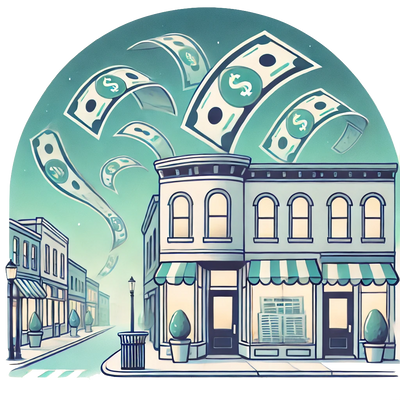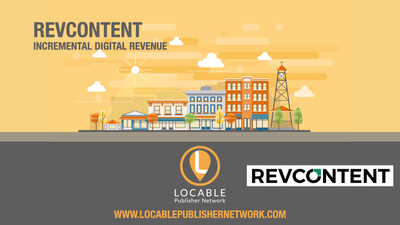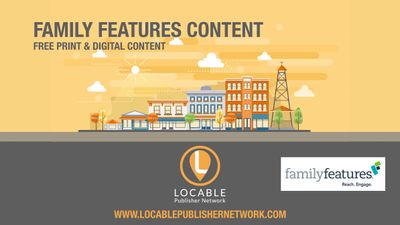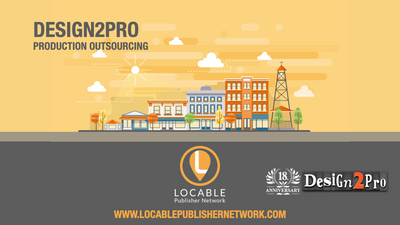Thinking About Adding a Paywall for Your Ad-Supported Publication? Think Again

Many newspapers and magazines are struggling to find a way to be profitable on the web. This has led many local publishers to experiment with using a paywall to help grow digital revenue. We believe this is a critical mistake for advertiser supported publications built upon false assumptions and will hurt circulation and readership long-term even if it creates a small short-term boost in revenue.
Alternatively, forming long-term relationships with local advertising partners delivers new revenue which then allows you to focus on growing your digital audience to best deliver value back to your advertisers.
Time spent reading newspapers has declined 25% over the past 4 years.
Paywalls create another impediment for readers to reach newspaper content - or worse, local general interest content on a newspaper site. The reduction in engagement hurts SEO (Search Engine Optimization) and social media sharing which creates a downward spiral and an even steeper decline in readership.
To start, our print-to-web strategy not only grows your online following with your print product but using your online audience to grow in print as well.
The Difference Between Print Readers and Online Readers
There are a few key differences between print readers and online readers. This is why you can’t treat print readers and digital readers the same. Print readers will typically spend time flipping through your physical publication.
Digital readers may visit your site because they see an interesting article, at that point they could possibly engage with that content by leaving comments or sharing/commenting on it on social media. If readers are very engaged by the content they will continue reading other interesting content they find on your site.
Your goal is to get readers to engage with as many pieces of content on your site as possible. Paywalls disrupt this process many ways. By limiting the amount of content a reader can see on your website, you are limiting how they use other resources like your business directory or events calendar. Overall that means you be providing less value overall which is exactly the opposite of what you want to accomplish.
Limiting Your Reach
One of the greatest downsides to using a paywall is that you will be limiting your reach.
Your most loyal followers won’t have a reason to share your content.
Even if they are a paid subscriber, they might not want to share an article for fear that it might get blocked by your paywall when their friends try to read it. This hurts chances of getting a lot of shares (and traffic) for your content.
Additionally, your advertisers want to reach as many potential customers as possible online and a paywall restricts how many people would see their ad.
In this way, creating a paywall is doing a disservice to your advertisers as well.
Local publications need to be cornerstones of their community in order to thrive online. They need to have highly local stories that engage readers in the community. Unfortunately, publications that decide to use a paywall end up alienating their community. They are actively making it harder for interested members of the community to get local news and engage online.
Our Community Sponsor Method
We advocate the approach of trying to go after more advertisers rather than focusing on the extremely small percentage of users that convert after hitting the paywall. According to the Newspaper Association of America, the average is about 0.5% of unique users convert to paid subscribers after hitting a paywall.
The average sponsor could be worth from 25-200 times or more in revenue compared to the average subscriber. It's much easier to add value to current clients than try to swim against the current with paid access to content.
We are also revolutionizing the way local publications think about advertising online and we have mapped out a clear path to $100,000 in revenue from diversifying your digital offerings to advertisers and approaching digital advertising from the mindset of attracting community sponsors first.
Additionally, by letting your entire community view everything you have to offer online, you will be able to give readers a sample of your content and work on different ways to convert digital readers to print subscribers. This is more effective than trying to create a pay wall because you are bolstering your print product.
What is Says to Advertisers
This is often overlooked because of old assumptions. In print, if you charge for your product it demonstrates reader interest to advertisers and, thus, it's valuable beyond the revenue it provides.
Online, however, all readers are explicitly opt-in, you can't push your message or content in front of people who aren't interested. It's just a different mechanism.
As a result, charging for content tells advertisers that they're second class citizens and that while you'd like them to pay you for various promotions you're going to arbitrarily limit customer access to those promotions to make a few more dollars.
Is that the message you want to be sending?
Bringing it All Together
In print you have production and distribution costs and paid access (subscriptions and per-issue charges) helps offset those but for most publishers their subscriber revenue doesn't even come close to covering fulfillment.
Online the incremental cost of fulfillment is basically zero (no extra cost to print & mail etc) so why apply a tax to readers to cover an expense that doesn't exist?
If you are currently using a paywall we hope this article has given you some food for thought about why it isn’t such a great idea. If you are considering putting up a paywall, we hope you will evaluate your choice further.
According to the American Press Institute, most newspapers don’t even survey readers before adding a paywall. We think this a huge mistake and will ultimately impair the ability to build community and it will turn off readers.
You will lose out on opportunities to help your advertisers in creative ways and the chance to try to convert digital readers into print subscribers. If you are a genuinely local publication when it comes to paywalls: just say no.
Deliver value and you can drive revenue.




